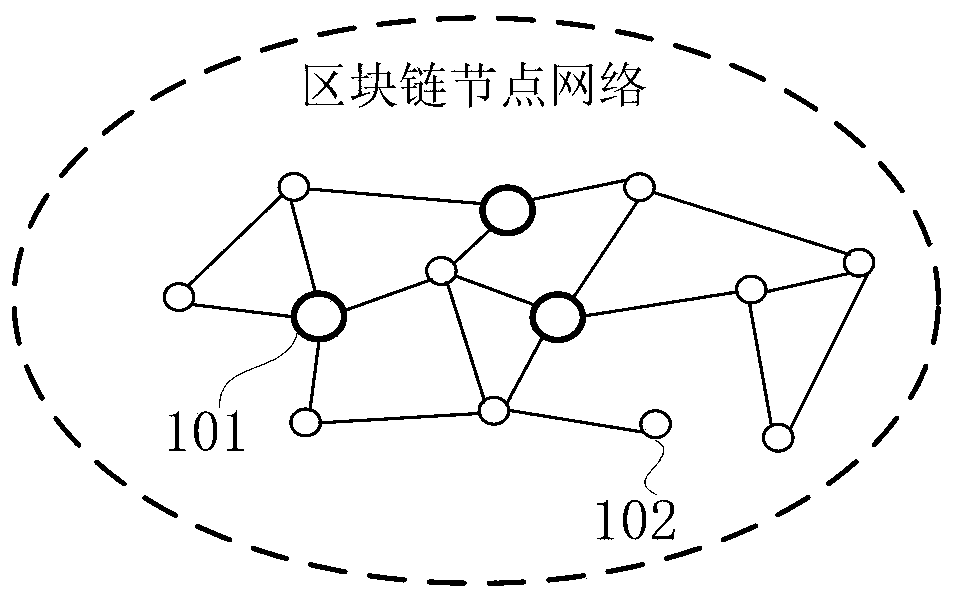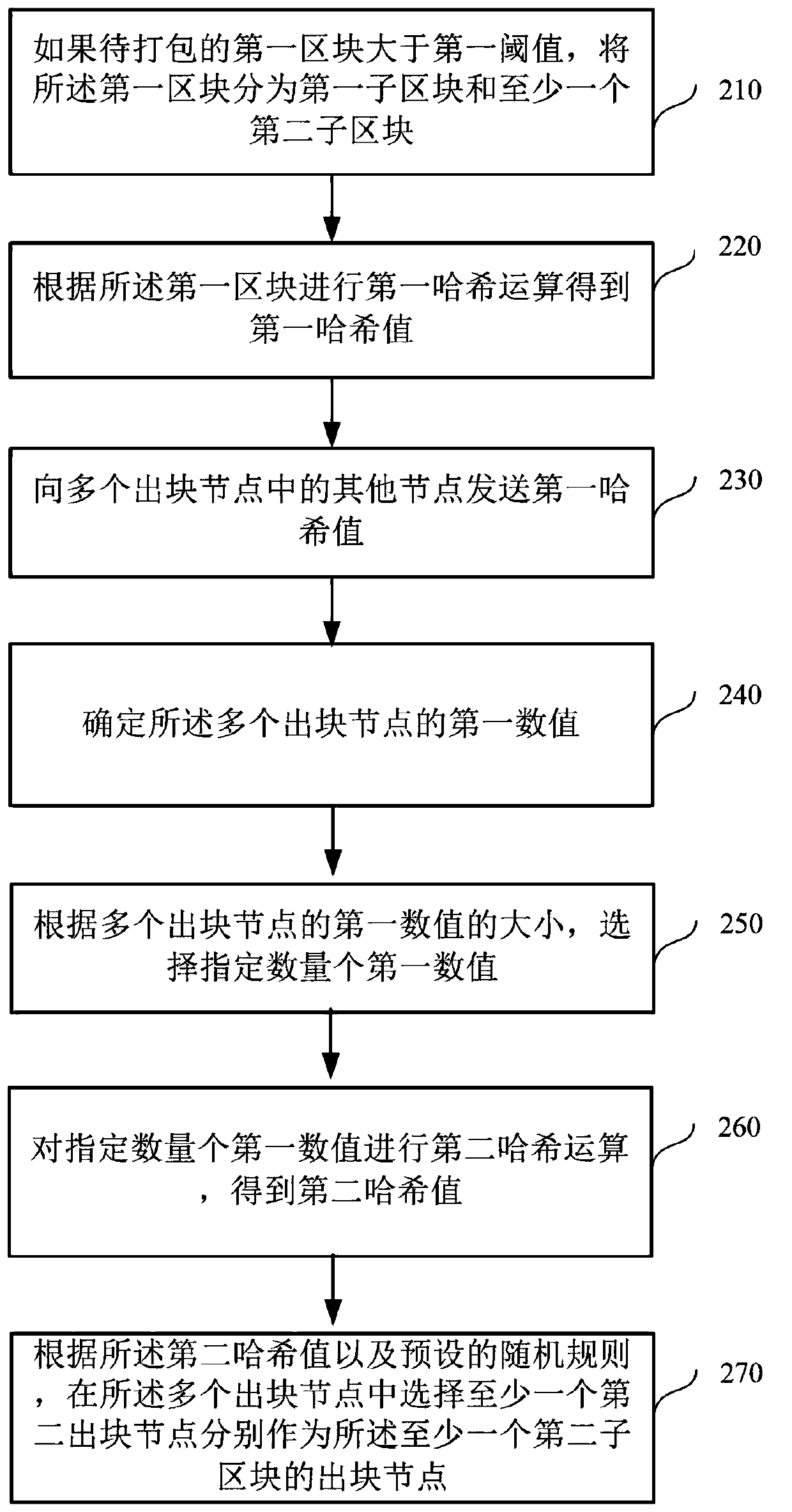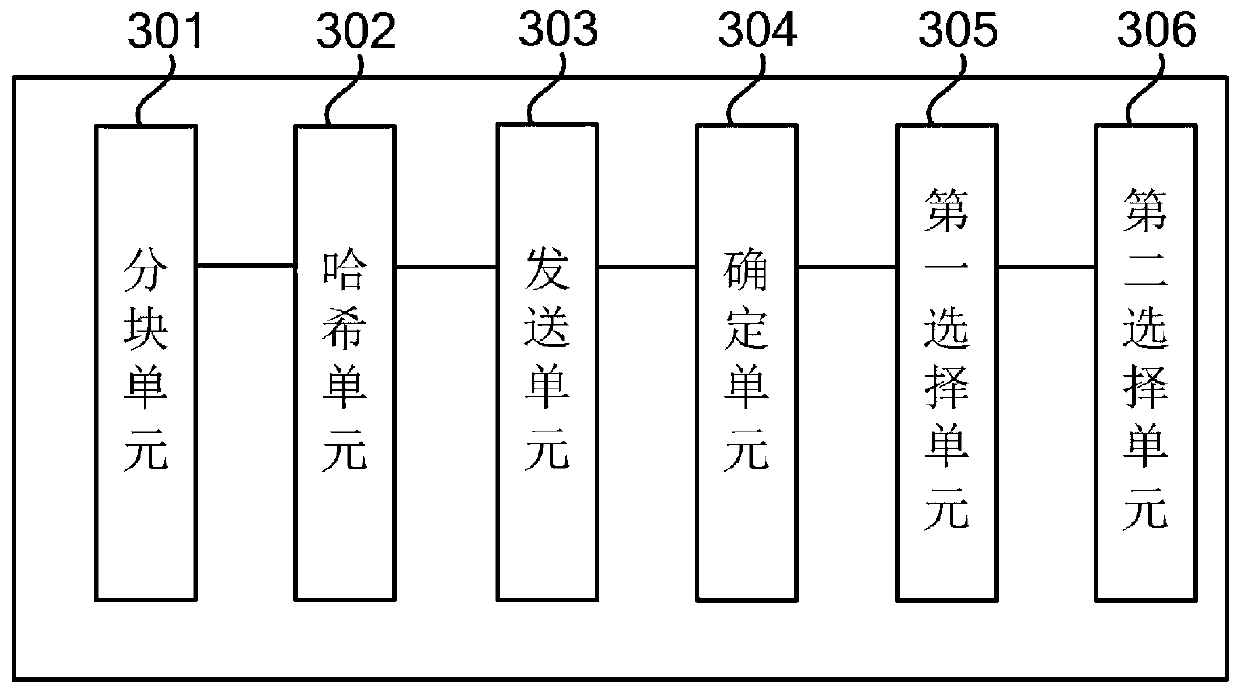Packing method and device on block chain
A blockchain and block technology, applied in the computer field, can solve the problems affecting the efficiency of accounting, development constraints, and higher computing power requirements of super nodes, so as to reduce the possibility of successful attacks, improve the efficiency of block generation, and improve the recording capacity. The effect of account efficiency
- Summary
- Abstract
- Description
- Claims
- Application Information
AI Technical Summary
Problems solved by technology
Method used
Image
Examples
Embodiment Construction
[0082] In order to make the purpose, technical solutions and advantages of the embodiments of the present invention clearer, the technical solutions in the embodiments of the present invention will be clearly and completely described below in conjunction with the drawings in the embodiments of the present invention. Obviously, the described embodiments It is a part of embodiments of the present invention, but not all embodiments. Based on the embodiments of the present invention, all other embodiments obtained by persons of ordinary skill in the art without making creative efforts belong to the protection scope of the present invention.
[0083] The embodiment of the present invention provides a packaging method and device on the block chain. figure 1 An exemplary architecture for applying the embodiments provided herein is shown.
[0084] Such as figure 1 As shown, the exemplary architecture may include multiple blockchain nodes, and the multiple blockchain nodes may includ...
PUM
 Login to View More
Login to View More Abstract
Description
Claims
Application Information
 Login to View More
Login to View More - R&D
- Intellectual Property
- Life Sciences
- Materials
- Tech Scout
- Unparalleled Data Quality
- Higher Quality Content
- 60% Fewer Hallucinations
Browse by: Latest US Patents, China's latest patents, Technical Efficacy Thesaurus, Application Domain, Technology Topic, Popular Technical Reports.
© 2025 PatSnap. All rights reserved.Legal|Privacy policy|Modern Slavery Act Transparency Statement|Sitemap|About US| Contact US: help@patsnap.com



